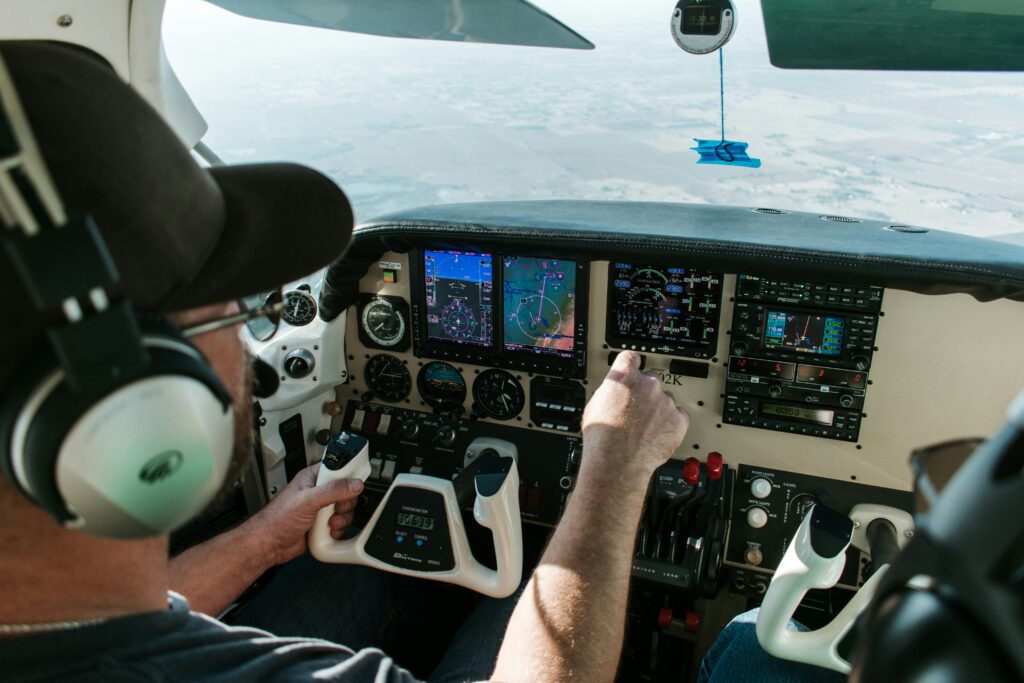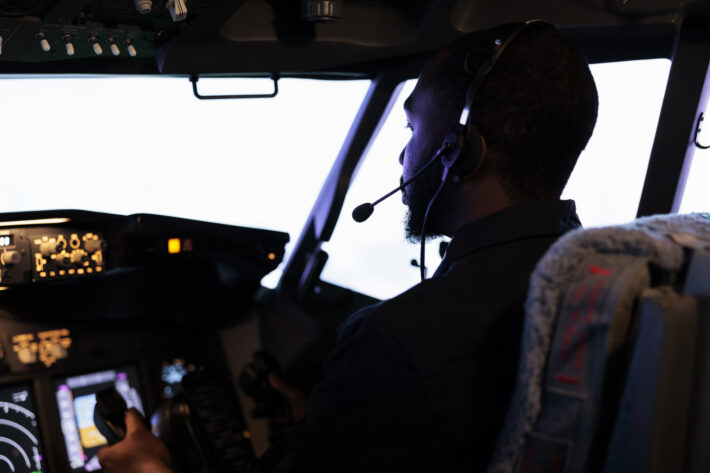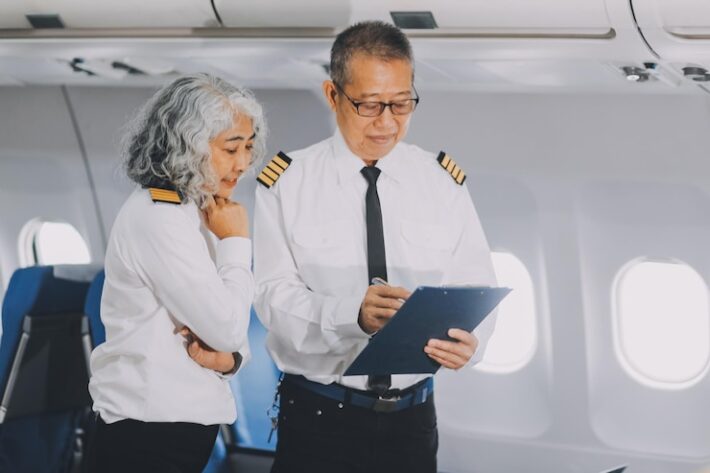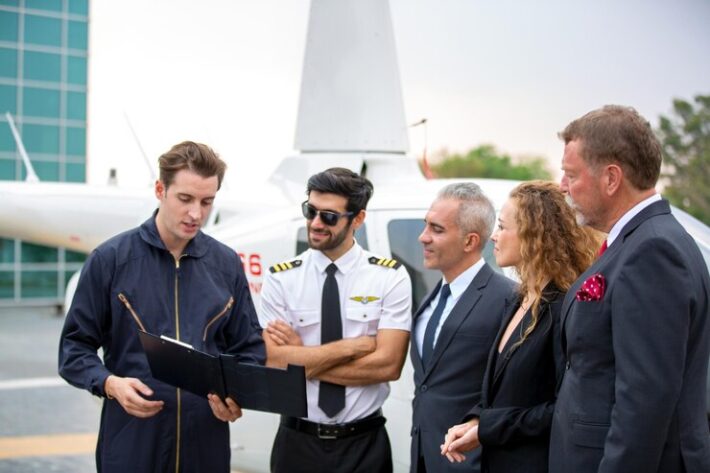From Student to Commercial: Hour Building Strategies in Florida

Florida offers unparalleled opportunities for pilots looking to build flight hours toward commercial certification and beyond. With year-round flying weather, diverse training environments, and a robust aviation infrastructure, the Sunshine State provides the perfect backdrop for efficient and effective hour building. This comprehensive guide explores strategies specifically tailored to Florida’s unique aviation landscape.
The Florida Advantage for Hour Building
Florida has long been recognized as a premier destination for flight training and hour building. The state’s distinct advantages create an environment where pilots can accumulate hours more efficiently than almost anywhere else in the country:
According to the FAA Flight Standards District Offices, Florida consistently ranks among the top states for pilot certifications issued annually, with several regions reporting over 300 flyable days per year.
“Florida’s combination of favorable weather, abundant airports, and diverse flying conditions creates an ideal environment for building quality flight hours. Pilots can progress significantly faster here than in regions where seasonal limitations restrict flying.” – Captain Jennifer Martinez, Chief Flight Instructor
Weather Advantages
- Year-round flying conditions with minimal weather-related cancellations
- Diverse weather patterns providing valuable experience with sea breezes, afternoon thunderstorms, and tropical systems
- Consistent VFR conditions during winter months when northern states face significant weather restrictions
- Extended daylight hours compared to northern states, particularly in winter
Infrastructure Benefits
- Over 500 airports including public, private, and seaplane facilities
- Extensive flight training ecosystem with hundreds of schools and instructors
- Multiple airspace classifications from uncontrolled fields to complex Class B environments
- Abundant maintenance facilities ensuring aircraft availability and minimal downtime
Geographic Diversity
- Coastal flying along both Atlantic and Gulf shorelines
- Cross-country opportunities within the state’s 500-mile length
- International options with proximity to the Bahamas and Caribbean
- Varied terrain from flat plains to rolling hills in northern regions
Hour Building Requirements: Understanding Your Target
Before implementing any hour-building strategy, it’s essential to understand exactly what you’re working toward:
Commercial Pilot Certificate Requirements
Under 14 CFR § 61.129, commercial pilot applicants need:
- 250 total flight hours including:
- 100 hours in powered aircraft
- 50 hours in airplanes (for airplane category)
- 100 hours as pilot in command (PIC) including:
- 50 hours in airplanes (for airplane category)
- 50 hours cross-country
- 20 hours of training with instructor including:
- 10 hours instrument training
- 10 hours in complex or technically advanced aircraft
- 5 hours night VFR with 10 takeoffs and landings
- One 300 NM cross-country flight
- One 2-hour cross-country flight in daytime
- One 2-hour cross-country flight at night
- 10 hours solo or performing PIC duties under instructor supervision including:
- 5 hours cross-country
- One 300 NM solo cross-country
- 10 takeoffs and landings at a controlled airport
Airline Transport Pilot (ATP) Requirements
For those targeting an airline career, 14 CFR § 61.159 requires:
- 1,500 total flight hours including:
- 500 hours cross-country
- 100 hours night
- 75 hours instrument time (actual or simulated)
- 250 hours as pilot in command including:
- 100 hours cross-country
- 25 hours night
Restricted ATP Options
Some pilots may qualify for reduced minimums under the Restricted ATP program:
- Military pilots: 750 total hours
- Bachelor’s degree with aviation major from approved program: 1,000 hours
- Associate degree with aviation major from approved program: 1,250 hours
- 1,500 hours for all other applicants
Florida-Specific Hour Building Strategies
1. Flight Instruction in Florida
What it is: Becoming a Certified Flight Instructor (CFI) to build hours while teaching others.
Florida advantages:
- High concentration of flight schools with instructor demand
- Year-round training operations
- International student population creating consistent demand
Implementation tips:
- Target high-volume Florida flight schools in Orlando, Miami, and Tampa areas
- Consider specializing in international student training
- Obtain seaplane or multi-engine instructor ratings for additional opportunities
- Network with Florida’s many flight school operators at aviation events
Florida earnings potential:
- Entry-level CFI: $25-35/hour
- Experienced CFI: $35-50/hour
- Specialty ratings instruction: $50-75/hour
2. Banner Towing Along Florida’s Coastlines
What it is: Flying aircraft towing advertising banners over beaches and tourist areas.
Florida advantages:
- 1,350 miles of coastline with popular beaches
- Year-round tourist presence
- Major events like spring break, air shows, and sporting events
Implementation tips:
- Focus on companies operating in Miami, Fort Lauderdale, Daytona, and Panhandle beaches
- Expect specialized training in banner pickup techniques
- Peak seasons include March-April (spring break) and summer months
- Winter opportunities in South Florida when northern operations shut down
Florida earnings potential:
- $20-30/hour plus potential incentives
- Seasonal work with highest demand in tourist seasons
- 300-600 hours possible during peak season
3. Aerial Photography in Florida’s Real Estate Market
What it is: Providing aerial images for real estate, tourism, and development projects.
Florida advantages:
- Booming real estate market with luxury properties
- Constant development and construction
- Tourism industry requiring promotional imagery
- Unique natural landscapes and coastlines
Implementation tips:
- Build relationships with Florida real estate photographers
- Create a portfolio of Florida landmarks and properties
- Consider obtaining a Remote Pilot Certificate for drone operations as complementary service
- Target high-growth areas like Orlando, Tampa Bay, and South Florida
Florida earnings potential:
- $100-200 per real estate shoot
- $500-1,500 for commercial property shoots
- Potential for package deals with multiple properties
4. Florida Flying Clubs and Partnerships
What it is: Joining or forming a group that collectively owns or leases aircraft.
Florida advantages:
- Numerous established clubs throughout the state
- Higher aircraft utilization due to favorable weather
- Diverse aircraft options including seaplanes and complex aircraft
Implementation tips:
- Research existing clubs through the AOPA Flying Club Finder
- Consider equity-based clubs for long-term hour building
- Look for clubs with multiple aircraft types to build diverse experience
- Evaluate clubs near popular cross-country destinations
Florida cost savings:
- 30-50% lower hourly rates compared to traditional rental
- Potential for overnight trips without daily minimums
- Access to more advanced aircraft at lower costs
5. Cost Sharing Through PilotPair in Florida
What it is: Connecting with other pilots or passengers to share the expenses of flights.
Florida advantages:
- Large pilot population creating more sharing opportunities
- Abundant interesting destinations for shared flights
- Year-round flying conditions maximizing availability
Implementation tips:
- Use PilotPair to find compatible partners in Florida
- Create profiles highlighting Florida flying experience
- Develop routes to popular Florida destinations
- Understand and follow FAA cost sharing regulations
Florida cost reduction potential:
- 50-75% reduction in per-hour costs
- Ability to access more expensive aircraft through shared expenses
- Potential to build hours on longer cross-country flights to Florida destinations
6. Seaplane Hours in Florida’s Lake Region
What it is: Building time in seaplane aircraft, adding valuable experience and ratings.
Florida advantages:
- Over 7,700 lakes and extensive coastline
- Year-round seaplane operations
- Home to leading seaplane training centers
Implementation tips:
- Obtain seaplane rating at locations like Winter Haven or Tavares
- Connect with seaplane operators for potential work opportunities
- Consider seaplane instructor certification for teaching opportunities
- Explore the “Seaplane City” of Tavares and Central Florida lake region
Value proposition:
- Unique logbook experience attractive to employers
- Access to locations unreachable by land planes
- Premium rates for seaplane instruction and tours
7. Florida Air Tours and Sightseeing
What it is: Providing aerial tours of Florida attractions and natural features.
Florida advantages:
- World-famous tourist destinations
- Unique natural features visible from the air
- Year-round tourism industry
Implementation tips:
- Focus on scenic areas like the Keys, Everglades, and coastlines
- Build relationships with tourism companies and hotels
- Develop specialized knowledge of Florida geography and points of interest
- Consider obtaining commercial seaplane rating for amphibious tours
Florida earnings potential:
- $25-40/hour as employed pilot
- Higher rates possible with specialty tours
- Potential for year-round work in South Florida
Florida Cross-Country Strategies
Florida’s geography makes it ideal for efficient cross-country hour building:
Strategic Florida Cross-Country Routes
East-West Routes:
- Jacksonville to Pensacola: 366 nm traversing the entire Panhandle
- Melbourne to Tampa: 124 nm crossing Central Florida
- Fort Lauderdale to Naples: 100 nm across the Everglades
North-South Routes:
- Jacksonville to Miami: 317 nm along the Atlantic coast
- Tallahassee to Tampa: 175 nm down the Gulf coast
- Orlando to Key West: 280 nm spanning Central Florida to the Keys
Multi-State Options:
- Miami to Savannah, GA: 450 nm coastal route
- Pensacola to New Orleans, LA: 170 nm Gulf Coast journey
- Jacksonville to Charleston, SC: 215 nm Southeast coastal route
Florida’s $100 Hamburger Destinations
These popular pilot destinations offer both valuable flight time and enjoyable experiences:
Albert Whitted Airport (SPG), St. Petersburg
- The Hangar Restaurant with runway views
- 2.5-hour round trip from Orlando
- Coastal flying experience
Marathon Airport (MTH), Florida Keys
- Island Fish Company nearby
- 3-hour flight from Miami
- Spectacular Keys and reef views
Fernandina Beach Municipal Airport (FHB)
- Historic downtown with multiple restaurants
- 4-hour round trip from Orlando
- Coastal barrier island experience
Flagler Executive Airport (XFL)
- High Jackers Restaurant on field
- 1-hour flight from Jacksonville
- Beach proximity for post-flight activities
Seasonal Considerations for Florida Hour Building
Summer Strategy (May-September)
Advantages:
- Longer daylight hours
- Less competition from seasonal pilots
- Lower rates at some flight schools
Challenges:
- Afternoon thunderstorms
- Heat and humidity affecting performance
- Hurricane season considerations
Recommendations:
- Fly early morning (before 11 AM) and evening hours
- Utilize weather radar apps for thunderstorm avoidance
- Plan shorter legs with alternate airports
- Maintain flexible scheduling for weather changes
Winter Strategy (October-April)
Advantages:
- Stable weather patterns
- Comfortable temperatures
- Clear visibility conditions
- Influx of seasonal aviation activities
Challenges:
- Busier airspace with seasonal traffic
- Higher demand for aircraft rentals
- Increased costs during peak tourist season
Recommendations:
- Book aircraft further in advance
- Explore less popular airports to avoid congestion
- Take advantage of perfect flying days for longer cross-countries
- Network with visiting pilots for cost sharing opportunities
Building Quality Hours in Florida
Not all flight hours are created equal. Focus on building quality experience that makes you more marketable:
Diverse Florida Flying Environments
Controlled Airspace Experience:
- Miami Class B operations
- Orlando Class B with theme park TFRs
- Tampa, Jacksonville, and Fort Lauderdale Class C airspace
Coastal Operations:
- Over-water navigation techniques
- Coastal weather pattern understanding
- Emergency landing considerations
Night Flying in Florida:
- Well-lit coastal areas
- Distinct visual references from theme parks
- Extensive airport lighting infrastructure
Building Florida-Specific Proficiencies
Weather Interpretation:
- Sea breeze convergence understanding
- Thunderstorm development patterns
- Tropical system navigation
Navigation Challenges:
- Similar visual terrain in some regions
- Water crossings and limited emergency landing areas
- VFR corridor navigation in complex airspace
Special Operations Areas:
- Military training routes and restricted areas
- Space launch activity near Cape Canaveral
- Wildlife refuge overflight restrictions
Financial Planning for Florida Hour Building
Cost Comparison by Region
| Region | Average Rental (C172) | CFI Rates | Estimated Cost to Commercial |
|---|---|---|---|
| South Florida | $160-190/hr | $60-80/hr | $45,000-55,000 |
| Central Florida | $140-170/hr | $50-70/hr | $40,000-50,000 |
| North Florida | $130-160/hr | $45-65/hr | $35,000-45,000 |
| Florida Keys | $170-200/hr | $65-85/hr | $48,000-58,000 |
Funding Options for Florida-Based Pilots
Florida Flight Training Loans:
- Credit unions specializing in aviation financing
- Florida-based lender programs
- School-specific financing options
Scholarships with Florida Connections:
- AOPA Florida scholarships
- Florida Aviation Business Association scholarships
- Florida Airports Council scholarships
- Women in Aviation Florida chapter opportunities
Work-Study Programs:
- FBO line service positions
- Dispatch and operations roles
- Aircraft cleaning and maintenance assistance
- Flight school administrative positions
Technology Tools for Florida Hour Building
Florida-Specific Flight Planning
ForeFlight Florida Features:
- Detailed Florida airspace information
- Saved routes for common Florida corridors
- Weather visualization for sea breeze and convection
Florida Weather Tools:
- Florida-specific weather patterns and forecasting
- Thunderstorm tracking and prediction
- Hurricane preparation resources
Florida Airports Guide:
- Detailed information on all Florida airports
- Pilot reviews and recommendations
- Local knowledge and tips
Hour Tracking and Documentation
Digital Logbooks:
Progress Tracking Features:
- Automatic calculation of requirements
- Visual progress indicators
- Currency tracking and alerts
Documentation Best Practices:
- Detailed remarks for cross-country flights
- Weather conditions documentation
- Specific Florida landmarks and checkpoints
Networking for Hour Building Opportunities
Florida Aviation Communities
Florida Pilots Association:
- Local chapter meetings
- Mentorship opportunities
- Job posting board for pilot positions
Florida Aviation Network:
- Industry connections throughout the state
- Regular meetups and events
- Online forum for opportunity sharing
University Aviation Programs:
- Embry-Riddle Aeronautical University (Daytona Beach)
- Florida Institute of Technology (Melbourne)
- Miami Dade College Aviation Program
Florida-Specific Job Hunting
Target Sectors:
- Flight schools and training centers
- Aerial tour operators
- Banner towing companies
- Aircraft ferry services
- Aerial photography businesses
- Regional airlines with Florida bases
Networking Events:
- Florida Aviation Business Association meetings
- SUN ‘n FUN Aerospace Expo (Lakeland)
- Florida airports open houses
- FAA Safety Team seminars
Creating Your Florida Hour Building Plan
1. Assessment Phase
Evaluate your current position:
- Hours logged and certificates held
- Financial resources available
- Time commitment possibilities
- Geographic flexibility within Florida
Set clear milestones:
- Commercial certificate requirements
- Potential instructor certification
- Specialty ratings (seaplane, multi-engine)
- Ultimate career goals
2. Strategy Selection
Combine multiple approaches based on your situation:
- Primary hour-building method
- Supplementary strategies
- Seasonal adjustments
- Financial sustainability plan
Create a detailed timeline:
- Monthly hour targets
- Certificate and rating deadlines
- Seasonal strategy shifts
- Financial checkpoints
3. Implementation and Tracking
Regular progress reviews:
- Weekly hour accumulation tracking
- Monthly strategy assessment
- Quarterly financial evaluation
- Continuous networking development
Adjustment mechanisms:
- Weather contingency plans
- Financial backup options
- Alternative hour-building methods
- Network expansion strategies
Success Stories: Florida Hour Building Journeys
Case Study 1: From Zero to Commercial in 9 Months
Pilot Profile: Sarah J., 28, career changer
Location: Orlando area
Strategy: Intensive flight training followed by banner towing
Key Elements:
- Completed private through commercial in 6 months
- Secured banner towing position for summer season
- Built 250 hours in 3 months of banner operations
- Leveraged hours to obtain CFI position at flight school
- Total investment: $42,000
Lessons Learned:
- Intensive training period required full-time commitment
- Summer banner towing provided rapid hour building
- Networking during training led to job opportunity
- Florida weather enabled consistent training schedule
Case Study 2: Part-Time Path to Professional Pilot
Pilot Profile: Michael R., 35, maintaining full-time job
Location: Tampa area
Strategy: Flying club membership with weekend flying
Key Elements:
- Joined equity-based flying club with C172 and PA-28
- Scheduled regular weekend cross-countries to Florida destinations
- Used PilotPair to find cost-sharing partners
- Completed commercial over 18 months while working
- Total investment: $35,000 (significantly reduced through cost sharing)
Lessons Learned:
- Florida’s weekend weather reliability enabled consistent progress
- Flying club reduced hourly costs by approximately 40%
- Cost sharing further reduced expenses by 50%
- Diverse Florida destinations maintained interest and motivation
Conclusion: Your Florida Hour Building Journey
Florida offers unparalleled advantages for pilots building time toward commercial certificates and beyond. By leveraging the state’s perfect flying weather, abundant airports, diverse flying environments, and robust aviation community, pilots can accumulate hours more efficiently and economically than in most other locations.
The key to successful hour building in Florida lies in creating a strategic plan that combines multiple approaches, takes advantage of seasonal opportunities, and builds quality experience that will be valuable for future career advancement.
Whether you’re a Florida resident or considering relocating temporarily for flight training, the Sunshine State provides the ideal environment to transform your aviation aspirations into reality through efficient and effective hour building.
What’s your experience building hours in Florida? Share your strategies and questions in the comments below!
Looking for cost-sharing partners in Florida? Join PilotPair today to connect with pilots throughout the Sunshine State.




